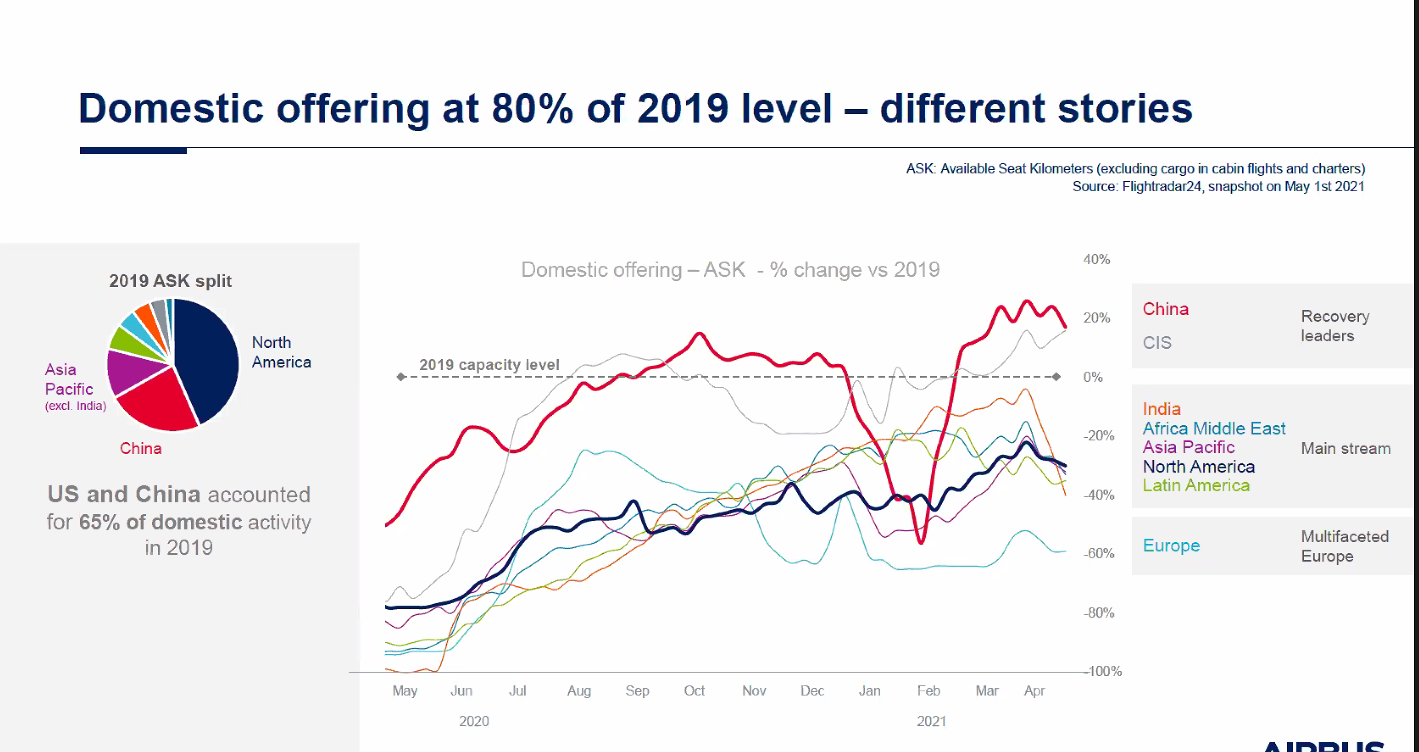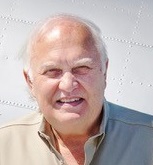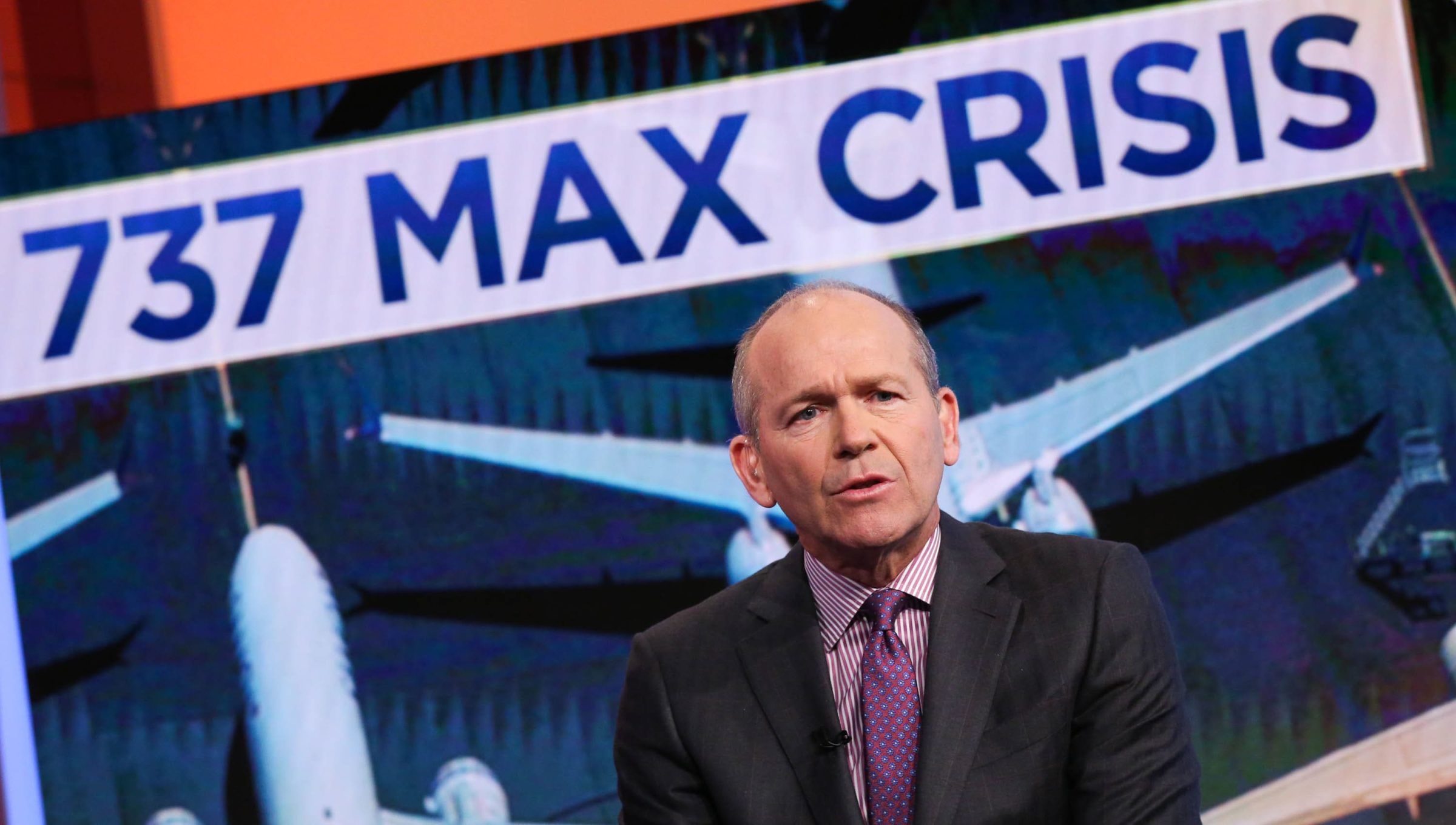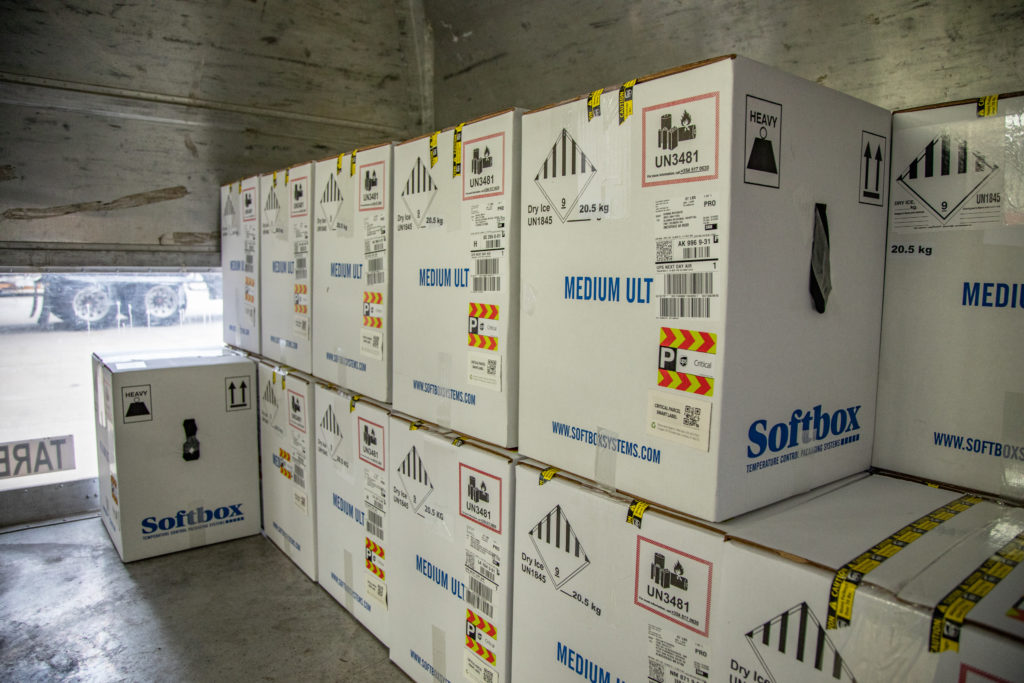Leeham News and Analysis
There's more to real news than a news release.
Airbus delivers strong 1H2021 and launches A350 Freighter
By Bjorn Fehrm
July 29, 2020, © Leeham News: Airbus presented its results for the first half of 2021 today. The company reported a profit of €2.7bn on a turnover of €24.6bn, a very strong result from the -€0.9bn of last year. Yesterday, the Airbus board gave the go-ahead for the A350 freighter with planned entry into service 2025.
The strong result came from deliveries of 297 commercial aircraft, 100 more than the 196 of 1H2020. Net orders were 38 aircraft (1H2020 196). Guidance for 2021 was increased to 600 airliner deliveries with operating profit at €4bn and Free Cash Flow of €2bn.
Asia-Pacific airline recovery held back by slow vaccination, border closures
Subscription Required
By Judson Rollins
Introduction
July 5, 2021, © Leeham News: The passenger air travel recovery from COVID-19 has been wildly uneven, even between neighboring countries. Most countries with large domestic markets have seen dramatic rebounds in passenger volumes, although yields have been held back by a continued slump in long-haul and business travel.
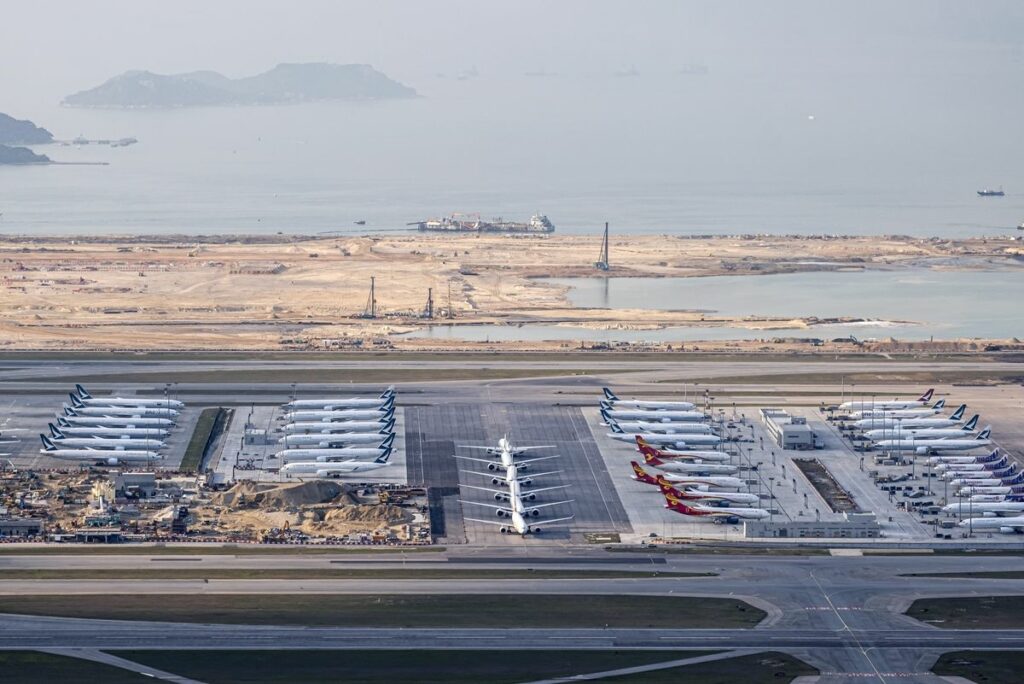
Aircraft parked at Hong Kong International Airport, with construction on a third runway in the background. Source: Bloomberg.
In the Asia-Pacific region, however, even short-haul international traffic has been disrupted by virus outbreaks, a painfully slow vaccine rollout, and a largely stagnant web of border closures.
Summary
- Much of Asia is well behind global average in the vaccine rollout.
- Domestic markets in China, Australia, and New Zealand are performing strongly.
- Border closures continue to cripple international travel.
- Many Asian countries are likely to stay closed well into 2022.
- Most Asian airlines are reporting slow progress toward capacity restoration.
HOTR: Airbus’ view on recovery from COVID; why Southwest stayed with MAX 7
By the Leeham News staff
May 11, 2021, © Leeham News: Domestic traffic throughout the world is returning to 2019 levels, but at different rates, according to an Airbus analysis.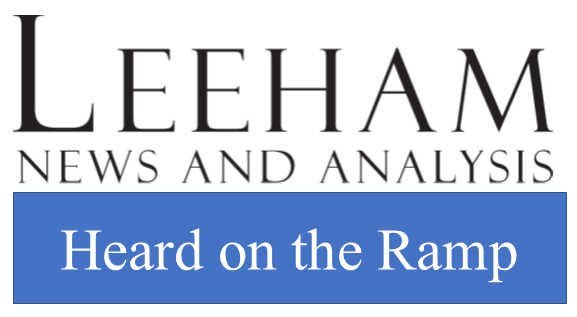
Robert Lange, Head of Business Analysis and Market Forecast, said today that the fragmented cross-border travel regulations and uneven vaccinations continue to inhibit passenger traffic recovery from the COVID-19 pandemic.
Pontifications: A330-300 could be great deal ahead
May 10, 2021, © Leeham News: The COVID-19 pandemic prompted airlines to ground more than 8,000 aircraft at the peak.
Among widebodies, no aircraft was hit harder than the Airbus A330ceo.
Traffic within China, the US and Asia recovers with narrowbody airplanes. European short- and medium-haul traffic is not recovering as quickly due to continued boarder closings. International traffic, for the same reason, remains awful.
But in chaos some see opportunities.
Jep Thornton, managing partner of the boutique lessor Aerolease, last week said the A330-300 could be a great trading opportunity.
At April 1, there were 267 -300s and 286 A330-200s (of all types) in storage, according to data reviewed by LNA.
Suppliers remain hunkered down as pandemic recovery may stall
Subscription Required
By Scott Hamilton
Introduction
March 8, 2021, © Leeham News: Aerospace suppliers continue to struggle even as passenger airlines begin to gingerly place new aircraft orders and  Boeing resumes production of the 737 MAX.
Boeing resumes production of the 737 MAX.
Airbus continues to produce the A320, A330 and A350 at lower production rates than the pre-pandemic era. Boeing is at low-rate production for the 737 MAX, after a 20-month grounding. The 777 is down to 2/mo and the 787 goes to 5/mo this month. At least two aerospace analysts on Wall Street think the 787 rate could come down further.
Airbus and Boeing each received a handful of orders so far this year.
But suppliers continue to struggle.
Summary
- Airbus, Boeing continue to extend payments.
- Smaller suppliers seek bankruptcies.
- Larger suppliers remain in “hunker down” mode.
“I’m sure glad 2020 is in the rear view mirror.”–David Calhoun, Boeing CEO
By Scott Hamilton
Jan. 27, 2021, © Leeham News: “I’m sure glad 2020 is in the rear view mirror.”
This was Boeing CEO David Calhoun’s opening statement in his appearance today on CNBC’s Squawk Box.
Calhoun appeared on the financial news network following the release of its 2020 full year financial results.
“The one big charge was for the 777X program,” Calhoun said. Boeing took a forward pre-tax charge of $6.5bn for the program. Carter Copeland of Melius Research noted in a video this morning that this probably was related to an adjustment in the accounting block. Calhoun said on CNBC that Boeing adjusted the accounting block, which has not been publicly announced, as part of the charge.
“Based on everything we learned in the 737 MAX recertification effort, we put more time into the 777X effort. It’s going to be a little more costly and take more time to certify,” he said.
Calhoun expects the 777X will be a big money maker in the future.
Small jet demand likely to stay depressed after COVID
Subscription Required
By Judson Rollins
Introduction
January 25, 2020, © Leeham News: As passenger travel trickles back to life, one trend that’s already apparent is a long-term diminution of airline yields in most regions.
This is largely driven by a reduction in business travel, some of which is likely to never return.
Regional jets and small single-aisles like the Airbus A220 and Embraer’s E2 family have higher unit cost, or cost per available seat-mile (CASM), than larger aircraft like the Boeing 737 or Airbus A320.
Achieving an operating profit with smaller jets requires high unit revenue, or revenue per available seat-mile (RASM). This will be difficult to achieve in a world where business travel is still down 70%-80% this year, even with a vaccine – and may be down 30% or more permanently.
What role will these smaller jets have after the pandemic? And will production match this new reality? A closer look is required.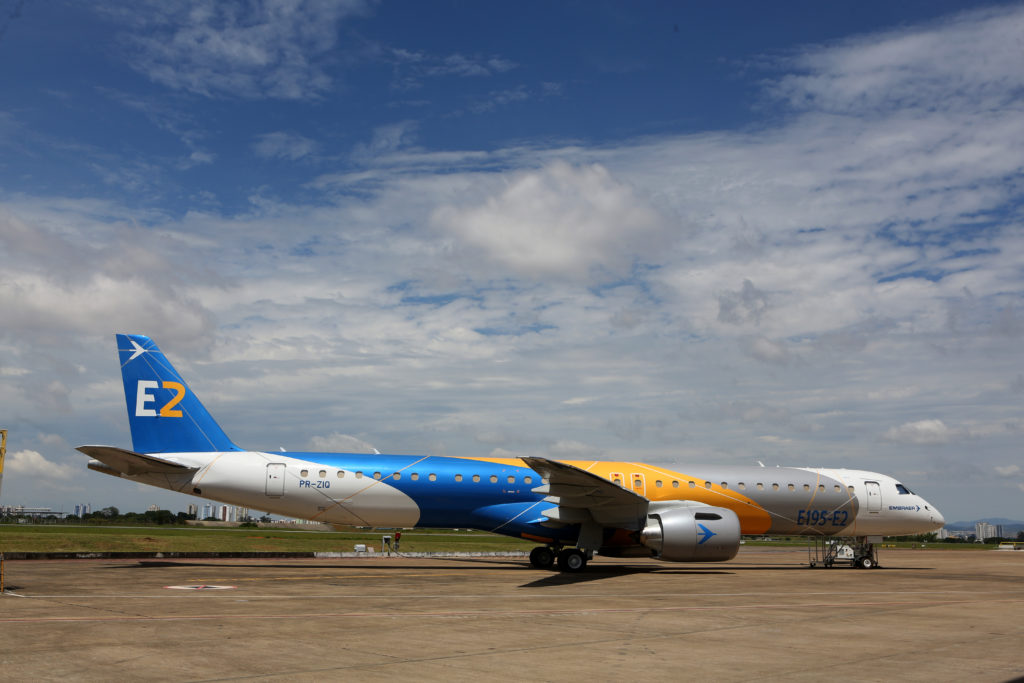
Summary
- Regional jets and smaller single-aisles have higher unit costs.
- High costs require higher unit revenue to be profitable.
- Business travel likely slow to return, with some permanently impaired.
- Smaller jets previously used for routes now in danger of demand fragmentation.
Boeing’s Calhoun completes first year as CEO
By the Leeham News Team
Jan. 13, 2021, © Leeham News: Today marks the first anniversary of David Calhoun becoming CEO of The Boeing Co.
Calhoun’s first year faced challenges unprecedented in Boeing’s history. There was the 737 MAX crisis. Sales of the 777X were stagnant. The balance sheet was stressed.
And then COVID exploded, all but destroying commercial passenger demand and with it, ability by airlines to take delivery of new airplanes.
Boeing’s balance sheet went further upside down. Production and quality control problems with the 787 emerged.
Finally, Calhoun was afflicted with a case of foot-in-mouth disease. This contrasted with his calm, well-received initial public face during the waning days of then-CEO Dennis Muilenburg’s stilted public persona.
Outlook 2021: Boeing needs boring, Airbus looks for recovery
Subscription Required
By Scott Hamilton and Vincent Valery
Introduction
Jan. 5, 2021, © Leeham News: What’s in store for Airbus and Boeing this year?
Boeing needs a boring year.
 Airbus is clearly better positioned than Boeing.
Airbus is clearly better positioned than Boeing.
Twenty-twenty one is a year of recovery for Boeing. It must dig out from a very deep hole.
Airbus reported that it hit cash break-even in the third quarter. But the company is not out of the woods yet.
Everything depends on something largely out of their control: how quickly the airline industry recovers from the COVID pandemic.
Summary
- Boeing hopes to deliver about half of the 450 stored MAXes this year.
- Low-rate production inches up for the 737.
- Widebody sales dried up for Airbus and Boeing.
Outlook 2021: Despite vaccines, COVID-19 will continue to dominate aviation in the coming year
Subscription Required
By Judson Rollins
Introduction
Jan. 4, 2021, © Leeham News: Recent approval of two major vaccine candidates are driving euphoria among aviation investors, employees, and travelers. Many commentators are talking about a “return to normal” later this year.
Alan Greenspan’s famous phrase, “irrational exuberance,” comes to mind. Vaccine approvals provide reason for hope, but not in the near term. Even Singapore’s government, one of the world’s most efficient, says it will need most of 2021 to fully vaccinate its population.
On the other end of the economic spectrum, Duke University’s Global Health Institute says low-income countries may have to wait until 2024 if high-income countries continue to reserve vaccines for their own populations.
Pharmaceutical giants Pfizer, Moderna, and AstraZeneca, which have released efficacy data on their vaccines and are now obtaining approval from various jurisdictions, announced a combined capacity to produce vaccines for up to 3.1bn people by the end of 2021. China’s Sinovac claims it will be able to produce 600m doses, but it is still evaluating the efficacy of its vaccine candidate.
Summary
- Reluctance to take vaccine likely to slow rollout
- Borders re-opening depends on rollout, proof of vaccination
- Pre-travel testing may be a dubious solution
- Business, leisure travel likely to be permanently impacted
- Airline financial woes likely to continue
- New aircraft demand will stay low in 2021



